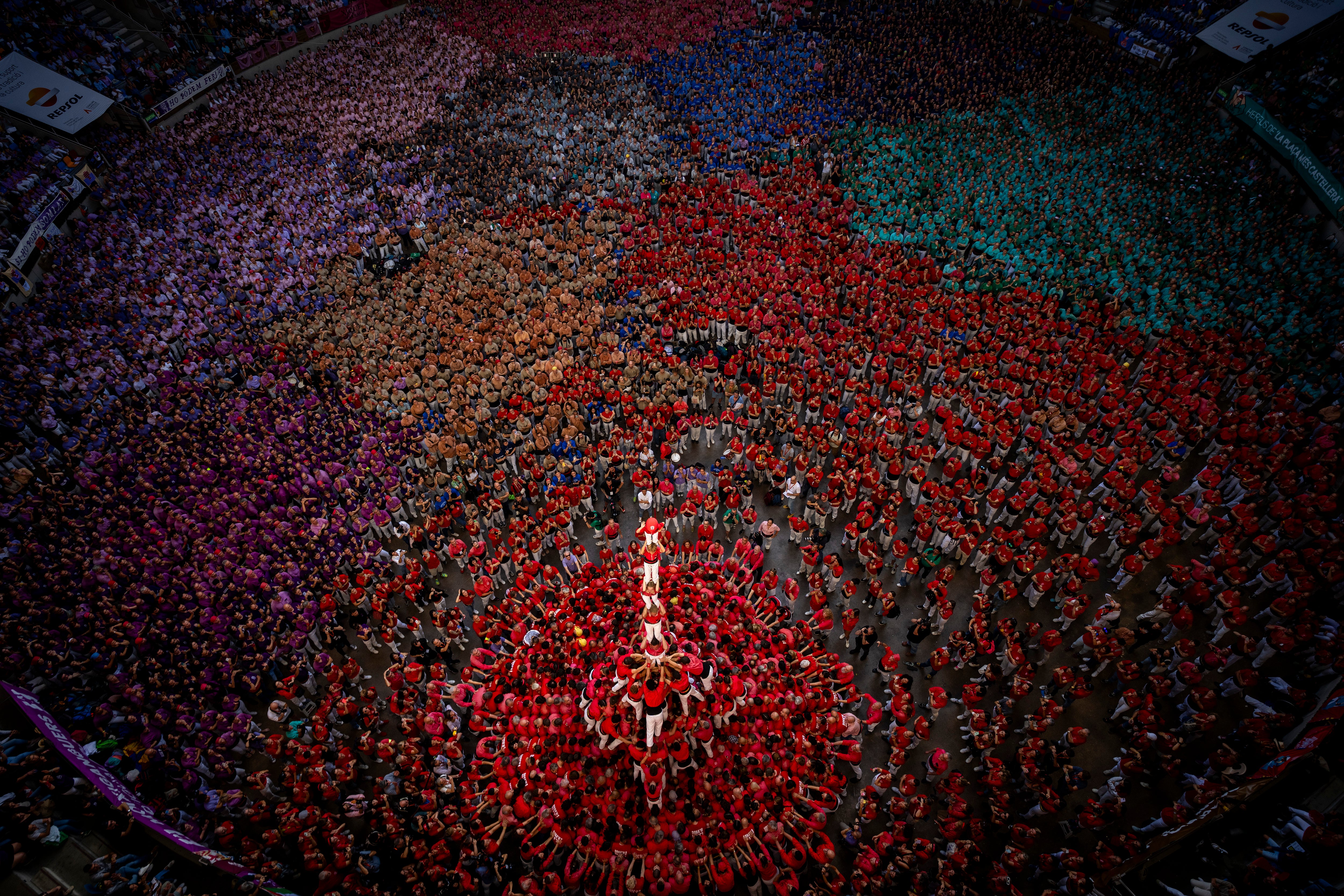An AP photographer gets the light just right from a perch up high above a human tower competition
Associated Press photographer and two-time Pulitzer Prize winner Emilio Morenatti, of Jerez de la Frontera, Spain, has visited more than 50 countries in an acclaimed 30-year career

Your support helps us to tell the story
From reproductive rights to climate change to Big Tech, The Independent is on the ground when the story is developing. Whether it's investigating the financials of Elon Musk's pro-Trump PAC or producing our latest documentary, 'The A Word', which shines a light on the American women fighting for reproductive rights, we know how important it is to parse out the facts from the messaging.
At such a critical moment in US history, we need reporters on the ground. Your donation allows us to keep sending journalists to speak to both sides of the story.
The Independent is trusted by Americans across the entire political spectrum. And unlike many other quality news outlets, we choose not to lock Americans out of our reporting and analysis with paywalls. We believe quality journalism should be available to everyone, paid for by those who can afford it.
Your support makes all the difference.Associated Press photographer and two-time Pulitzer Prize winner Emilio Morenatti, of Jerez de la Frontera, Spain, has visited more than 50 countries in an acclaimed 30-year career. Here’s what he had to say about covering the “Castells” in his home country.
Why this photo?
This is the largest “Castells” -- human towers competition -- and one of the most important traditions in Catalonia, which takes place in an old bullring in Tarragona. There, the “collas” -– teams -- gather to compete over a weekend to build the best human tower. Some of these towers reach over 16 meters (52½ feet) in height and require more than 1,000 people in perfect formation to achieve.
How I made this photo
Although it might seem that the photograph was taken with a drone, that’s not the case. It’s actually an almost overhead shot captured from a narrow catwalk suspended about 30 meters (98 feet) high, using a 17mm wide-angle lens mounted on a Sony Alpha 1 camera. To work at that height, you need to wear a safety harness and, above all, not be afraid of heights. I’ve suffered from vertigo ever since I lost my leg in a Taliban attack in Afghanistan, so the challenge of moving across a shaky catwalk with every step and motion was even greater.
Why it works
I believe this photo works because a ray of light illuminates the top of the human tower, highlighting and defining it from the rest of the image, which remains slightly darker. But this didn’t happen by chance. I had been observing, since early morning, how a timid ray of sunlight was entering the arena from the side, so it was just a matter of calculating and waiting for the height of one of the towers to intercept it. And that’s exactly what happened. As the top of the human tower rose higher, it got closer to the ray of light that was already crossing the plaza, gaining exposure along the way. So, when the last person to crown the tower — in this case, a 6-year-old girl— raised her right hand in a gesture of victory, I knew that was the exact moment I had been waiting for.
—-
For more extraordinary AP photography, click here.